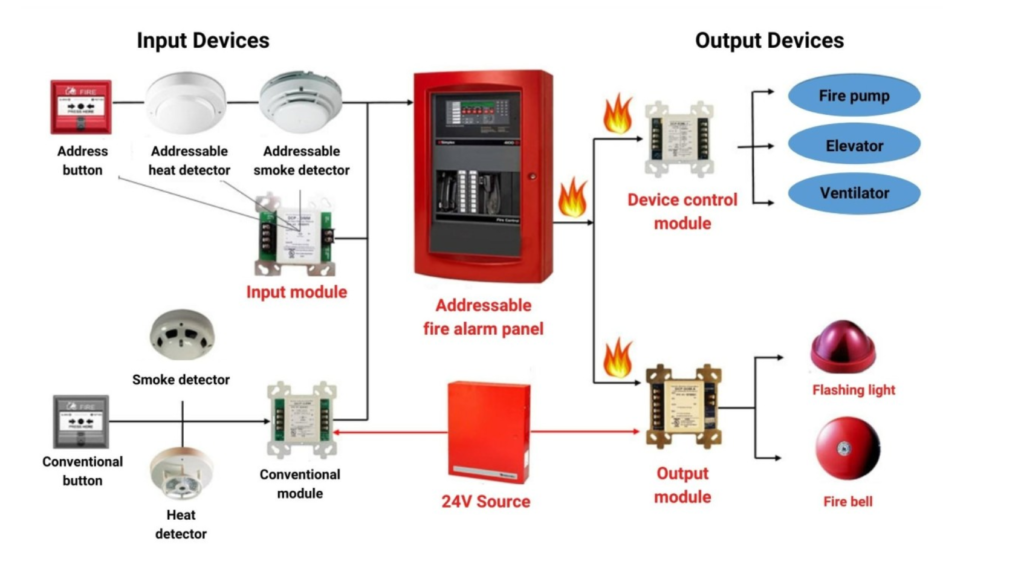
A fire alarm system is a building system designed to detect, alert occupants, and alert emergency forces of the presence of fire, smoke, carbon monoxide, or other fire-related emergencies. Fire alarm systems are required in most commercial buildings. They may include smoke detectors, heat detectors, and manual fire alarm activation devices (pull stations). All components of a fire alarm system are connected to a fire alarm control panel. Fire alarm control panels are usually found in an electrical or panel room. Fire alarm systems generally use visual and audio signalization to warn the occupants of the building. Some fire alarm systems may also disable elevators, which are unsafe to use during a fire under most circumstances.
Fire alarm systems are designed after fire protection requirements in a location are established, which is usually done by referencing the minimum levels of security mandated by the appropriate model building code, insurance agencies, and other authorities. A fire alarm designer will detail specific components, arrangements, and interfaces necessary to accomplish these requirements. Equipment specifically manufactured for these purposes is selected, and standardized installation methods are anticipated during the design.
There are several commonly referenced standards for fire protection requirements so we provided by our global partners (Thorn) from England, and (Hochiki) from the USA.
